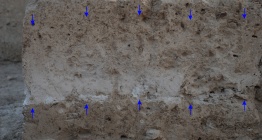In 2014, during construction work at the ex-Civil Hospital in Gibraltar, excavations led by the Gibraltar Museum revealed a major, previously unknown burial ground containing more than 200 skeletons.
A major research project co-funded by the University of Gibraltar, HM Government of Gibraltar and the University of Cambridge has uncovered more than 250 skeletons dating back to Gibraltar’s little-studied, Spanish period (AD 1462-1794).
These remains are now the object of a major research article entitled “Death in the sun: the bioarchaeology of an early post-medieval hospital in Gibraltar”, recently published in the Post-Medieval Archaeology journal. The discovery was made at the old St Bernard’s Hospital site – now St. Bernard’s School – in the Upper Town between 2014 and 2017.

The project was led by Gibraltarian archaeologist Kevin Lane and featured an international team of experts including Clive Finlayson, Jennifer Grant and Emma Pomeroy. The excavation team was directed by Geraldine and Stewart Finlayson of the Gibraltar National Museum and included Esperanza Mata Almonte, Jorge Ramirez Leon and Luis Cobos Rodriguez. Local historian and former paediatrician Sam Benady provided expert knowledge on the early history of the old St. Bernard’s Hospital.
Similar to today, Gibraltar between 1462 and 1794 was an important trade hub in the Western Mediterranean, during that period’s Age of Discovery and later on. The effects of this period of incipient globalisation are reflected in the 251 skeletons of what was then a naval hospice, initially run by local philanthropist Juan Mateos and subsequently by the Spanish hospitaller order of Los Padres de Juan de Dios (now known as La Orden Hospitalaria de San Juan de Dios) from the late 16th to early 18th Century.
The remains, mostly of teenage and young men, included evidence for amputations, surgery and syphilis and were usually buried in small groups in what would have been the courtyard running alongside the church of the hospital.

Tantalisingly, the excavation also revealed the remains of an earlier Moorish occupation at the same site, dating to the 14th and 15th Century. Ongoing research will reveal more information concerning the role of this key institution throughout Gibraltar’s history, including DNA studies, isotope analysis and further radiometric dating.
Archaeological material analysis was undertaken by Maria Cristina Reinoso de Rio and Jose Maria Gutierrez Lopez of the Museo de Villamartin, Cadiz. Emma Pomeroy, Jennifer Grant and Devin Ward coordinated the bioarchaeological analysis of the bone remains. Local and UK-based volunteers also helped with this research, including Sioned Cox, Brielle Gafan, Kasmeen Khaira, Nuhaila Mkerref, Justin Martinez, Marie Mosquera, Jake O’Donohoe, Gwynneth Bennet and Angela Pomeroy.
University of Gibraltar
Credits of Photos: University of Gibraltar








 Halep’teki Emevi Ulu Camii restorasyonu devam ediyor
Halep’teki Emevi Ulu Camii restorasyonu devam ediyor  Side Antik Kenti'ndeki Athena Tapınağı restorasyon çalışmaları tamamlandı
Side Antik Kenti'ndeki Athena Tapınağı restorasyon çalışmaları tamamlandı  Eskişehir'in Sakarya çizgili sazancığı koruma altına alındı
Eskişehir'in Sakarya çizgili sazancığı koruma altına alındı  Aspendos Antik Kenti'ndeki arkeolojik kazılarda Hermes heykeli bulundu
Aspendos Antik Kenti'ndeki arkeolojik kazılarda Hermes heykeli bulundu 




